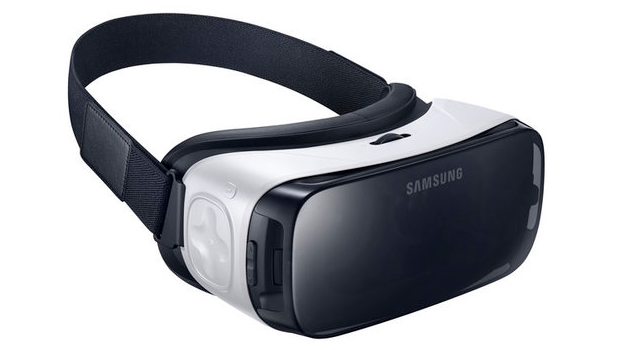With expected shipments now pushed back from March 2016 all the way to June, pre-orders for the Oculus Rift virtual reality (VR) head-mounted display (HMD) seem to be performing just fine despite the surprising $600 USD price tag. It’s hard to deny, however, that the cost is simply too much for a vast number of people, especially when paired with a PC capable of running the kit, which brings the all-in cost to at least $1,500. Oculus VR thinks it has an answer for those people that can’t afford the Oculus Rift, however, and that answer is the Gear VR, its mobile-based HMD made in partnership with Samsung.
Over the past week Oculus VR’s Head of Worldwide Studios Jason Rubin has claimed that price-conscious VR fans should be picking up a Gear VR, while Oculus Rift creator Palmer Luckey has even gone as far as to say it may have approached the Oculus Rift’s ‘quality over price’ process differently if the mobile kit didn’t exist. These are some bold statements that back up the company’s faith in the $99 device, but Gear VR has a long way to go if it’s really to be considered the true answer to cheaper VR.
That’s not to say it isn’t a great piece of kit. Using Samsung’s 2015 smartphones, Gear VR offers a display that’s as good if not better than some of the major PC and console-based HMDs on the horizon. It’s also untethered, creating a liberating sensation that will no doubt be sorely missed when enthusiasts transition from the kit to the Oculus Rift in a few months’ time. Gear VR is simply far beyond other mobile HMDs, but it’s not even close to competing with the likes of the Oculus Rift, HTC Vive or PlayStation VR.
The problems preventing the device from stacking up stretch across software, hardware and marketing. The system already offers some great videogames, for example, including the likes of Land’s End, Gunjack, and Esper 2. It’s also updated with new submissions by the week. The trouble is that, regardless of how good some of these experiences are, many of them offer a just few short hours of content. Gunjack’s 20 levels can be seen through in around two hours and Land’s End will only take roughly 45 minutes. That would be fine if this was a console-like situation in which these titles supplement bigger 10 – 50 hour AAA releases, but on a mobile platform these are those AAA releases.
Gear VR needs to get some longer, meatier titles under its belt on the videogame-front, even if Oculus VR is now claiming the device is primarily used for 360 degree video. We’re not expecting, say, Fallout VR, but if those wanting an Oculus Rift are to be tided over by the mobile device then it needs a killer app that’s worth buying the device for. If a diehard videogame player were to pick up the Gear VR now, they could play through the best content in less than a week with little challenge. Then it’s just a case of waiting for new additions to the store, which is where the marketing issues come in
VRFocus recently picked five ‘Ones to Watch’ in terms of Gear VR videogames in 2016, and it was admittedly a struggle to come up with five worthy submissions. But, at the same time, new apps are dropping by the week and usually include something worth checking out, it’s just that you don’t know about them until they’re available. Dim Light hit the device this week, and early impressions suggest it’s an effective and unique VR horror adventure, but we didn’t even know it was in development until it released. We’d love to tell you about all the exciting apps on the way to kit this year, but we simply don’t know about most of them.
Oculus VR and Samsung need to establish better channels to make users aware of what’s on the way. Sometimes nine apps drop at once and Oculus VR makes a post about it. Sometimes one app drops and no one mentions it. The device desperately needs some consistency in terms of its marketing; fans need to know what they have to look forward to in the year ahead and need to be informed when it arrives. Right now both Oculus VR and Samsung are failing on this front.
That consistency issue stretches over to hardware, too. The new Gear VR doesn’t include a bundle with a controller like the original Innovator’s Edition did and the Oculus Rift will do with an Xbox One controller. Granted most titles stray away from using a pad because of this, but you won’t be able to play some of the kit’s best games, including Dreadhalls, unless you have one. It’s an essential addition if you’re really going to consider the device as a true alternative to the Oculus Rift, as gaze-based controls and touchpad compatible titles are just too limited in the long run.
One more positive step in this direction is the Rink controllers, which have been shown at CES this week for the first time. They’re still in the concept phase, but these motion-based devices will help bring essential hand presence into Gear VR, complete with finger tracking. It’s just in the concept stage, but if this device could be perfected and released it could go a long way to bringing the Gear VR more in line with the bigger HMDs.
That’s not the only advancement the hardware needs to make, however, as the lack of positional tracking in the kit is one of its biggest faults. The screen resolution may push the Gear VR far beyond the Oculus Rift’s first-development kit (DK1), but without the ability to move your head in any direction for 360 degree tracking the device is arguably more limited than DK2. Positional tracking has become an essential component in major VR HMDs, and its omission from the consumer version of the Gear VR was one of the biggest drawbacks. Work is going into this area, but it’s something we want to see fixed sooner rather than later.
Again, Gear VR is a great piece of kit and well worth the price of entry for anyone that already has one of Samsung’s phones. But it’s not even close to being a worthy alternative to the true Oculus Rift experience right now. The device is in real need of better messaging, a bigger library and improved tech before you could really advise any videogame fan to invest in that instead of waiting for a cheaper Oculus Rift. We’re confident it will get there, but it’s a little early yet.
-END-
The post Field of View: Gear VR Has A Long Way to Go Before its Really the Answer to Price-Concious VR appeared first on VRFocus.

















